 |
Roberts R700 U.K. - 1967 |
 |
 Description
Description |
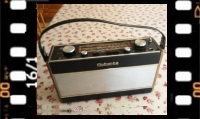 |
Descrizione Schema elettrico |
|||
|
|
|||||
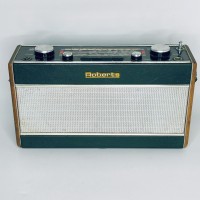 |
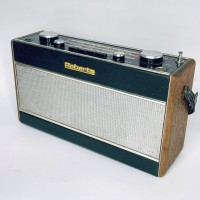 |
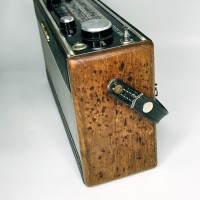 |
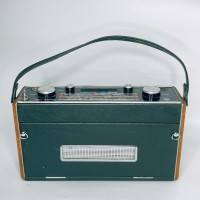 |
||
|
La R700 era un ricevitore progettato e commercializzato dalla Roberts a partire dal 1966 assieme al modello R303, con la quale condivideva stile e forma, ma era di dimensioni maggiori e costava il doppio perché in aggiunta alle Onde Medie e Lunghe poteva ricevere anche la banda FM. Fatto inusuale per l'epoca nel Regno Unito, la copertura in FM della R700 arrivava fino ai 108 MHz quando normalmente i ricevitori commerciali dell'epoca si fermavano a 101 o 104 MHZ in modo da non coprire le gamme di frequenze VHF superiori utilizzate dalla Polizia e dalle Forze Armate. Il mobile in legno aveva pannelli laterali di teak il resto era ricoperto in finta pelle, l'altoparlante era un Rola ellittico da 17,8 x 13,58cm da 25 Ohm ed era pilotato dalla coppia di transistor in simmetria complementare AC127/OC81. La radio oltre al controllo di volume era dotata di controlli separati per i toni acuti e i toni bassi. Tutte queste caratteristiche fornivano alla R700 prestazioni acustiche eccezionali. La R700 aveva circuiti separati per l'AM e la FM, ed entrambi erano del tipo supereterodina con le seguenti coperture in frequenza: Onde Medie da 520 a 1640 kHz, Onde Lunghe (da 150 a 268 kHz e FM da 87 a 108 MHz. La radio utilizzava quattordici transistor al germanio: AF180, AF114, AF114, AF114, AF114, AF117, AF117, AF117, OC71, OC75, AC127, OC81D, OC81, AC127m un diodo BA102 e due AA119. I circuiti di Media Frequenza erano due, uno a 470 KHz per l'AM e l'altro a 10700 KHz per la FM. Il circuito d'ingresso del ricevitore FM e i due transistor AF117 della Frequenza Intermedia AM erano racchiusi in schermi rettangolari di alluminio per evitare interferenze. Altra caratteristica che impreziosiva la R700 era l'AFC (Controllo Automatico di Frequenza). Premendo un tasto si poteva sintonizzare con precisione la stazione desiderata, poi ci pensava la radio a rimanere sintonizzata su tale frequenza senza slittamenti o variazioni. L'antenna per OM e OL era avvolta su un lungo nucleo di ferrite, e per meglio sfruttarne la direzionalità, anche la R700 come le altre Roberts, era dotata del disco di plastica girevole alla base che permetteva la rotazione dell'apparecchi. Per ricevere la FM la R700 utilizzava un'antenna a stilo da 78 cm di lunghezza dotata di snodo alla base, perciò una volta estratto lo stilo poteva essere piegato in varie angolature alla ricerca della polarizzazione migliore per ricevere il segnale VHF. Sul lato destro della scala parlante c'era una presa per un'antenna esterna utile quando si voleva ascoltare la radio in auto. La scala parlante della R700 come da tradizione Roberts era posta sul lato superiore della radio e comprendeva quattro tasti, quattro manopole e due prese: a destra c'era il controllo della sintonia, la regolazione dei toni acuti e la presa d'antenna. Nella parte sinistra si trovava la manopola del volume che comprendeva l'interruttore di accensione, quella dei toni bassi e la presa per collegare un registratore audio. Nel mezzo in basso c'era la tastiera con i tasti marcati: TUNE per la sintonia fine, FM per selezionare la gamma VHF, MW per le Onde Medie e LW per le Onde Lunghe. L'alimentazione della R700 era fornita da due grosse batteria da 9 V tipo PP9 o equivalente che trovavano posto nella parte inferiore del mobile in legno. Le due batterie erano poste in serie per un totale di 18 V e permettevano alla radio di godere di una lunga autonomia di esercizio. Le dimensioni della R700 erano: 30 x 19 x 9,5 cm. e il peso era di 2.6 kg senza le batterie. L'esemplare di R700 che sono riuscito a rintracciare è funzionante e ha il numero di serie 26480. La radio è stata sicuramente prodotta nel 1967 perché sulla scala parlante nella zona FM sono xerigrafate le stazioni BBC2, BBC3 e BBC4 e la BBC1 sulla MW. Le stazioni radio BBC1/2/3/4 erano specializzate in vari generi musicali e tutte avevano iniziato le trasmissioni nel 1967. Oltre alla BBC, sulla scala parlante non poteva ovviamente mancare Radio Luxembourg che in quegli anni di notte copriva tutta Europa trasmettendo il suo forte segnale in lingua inglese sui 208 metri (1440 kHz) in Onde Medie. IK3HIA © 2023. |
|||||
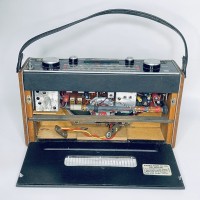 |
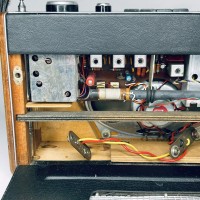 |
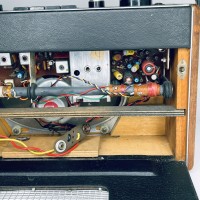 |
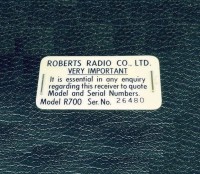 |
||
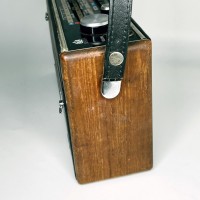 |
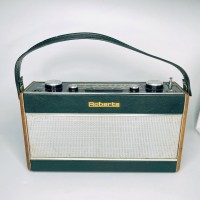 |
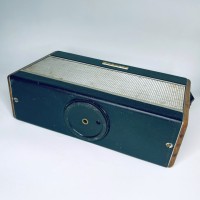 |
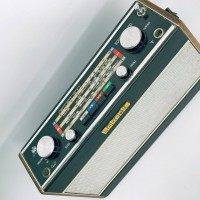 |
||
|
|
|||||
 Roberts R700
- Roberts Radio Co. Ltd., East Molesey, Surrey, U.K. - 1967.
Roberts R700
- Roberts Radio Co. Ltd., East Molesey, Surrey, U.K. - 1967.The R700 was a receiver designed and marketed by Roberts starting in 1966 together with the model R303, with which it shared style and form, but was larger and cost twice as much because in addition to Medium and Long Waves it could receive Frequency Modulated. Unusual for the time in the United Kingdom, the FM coverage of the R700 reached up to 108 MHz when commercial receivers of the time normally stopped at 101 or 104 MHZ so as not to cover the higher VHF frequency ranges used by the Police and Armed Forces. The wooden cabinet had teak side panels, the rest was covered in imitation leather, the speaker was a 7x4 inch 25 Ohm elliptical Rola and was driven by the pair of transistors in complementary symmetry AC127/OC81. The radio in addition to the volume control was equipped with separate controls for the treble and bass tones. All these features gave the R700 exceptional acoustic performance. The R700 had separate circuits for AM and FM, and both were of the superheterodyne type with the following frequency coverages: Medium Wave from 520 to 1640 kHz, Long Wave from 150 to 268 kHz and FM from 87 to 108 MHz. The radio used fourteen germanium transistors: AF180, AF114, AF114, AF114, AF114, AF117, AF117, AF117, OC71, OC75, AC127, OC81D, OC81, AC127, a BA102 diode and two AA119. There were two IF circuits, one at 470 KHz for AM and the other at 10700 KHz for FM. The FM front-end circuit and the two MW IF AF117 transistors were enclosed in rectangular aluminum screens to avoid interference. Another feature that enhanced the R700 was the AFC (Automatic Frequency Control). By pressing a button you could precisely tune the desired station, then the radio would take care of staying tuned to that frequency without slipping or variations. The antenna for MW and LW was wrapped around a long ferrite core, and to better exploit its directionality, the R700, like the other Roberts, was equipped with a rotating plastic disk at the base that allowed the rotation of the device. To receive FM, the R700 used a 78 cm long whip antenna with a joint at the base, so once the whip was extracted it could be bent at various angles in search of the best polarization to receive the VHF signal. On the right side of the dial there was a socket for an external antenna useful to listen to the radio in a car. The dial of the R700 as per Roberts tradition was placed on the upper side of the radio and included four buttons, four knobs and two sockets: on the right there was the tuning control, the treble adjustment and the antenna socket. On the left side there was the volume knob which included the power switch, the bass knob and the socket to connect an audio recorder. In the middle at the bottom there was the keyboard with the keys marked: TUNE for fine tuning, FM to select the VHF range, MW for Medium Waves and LW for Long Waves. The power supply of the R700 was provided by two large 9 V batteries type PP9 or equivalent that were placed in the lower part of the wooden cabinet. The two batteries were placed in series for a total of 18 V and allowed the radio to enjoy a long operating autonomy. The dimensions of the R700 were: 11.9 x 7.5 x 3.7 inch, and the weight was 5 lb 11.6 oz without batteries. The R700 I managed to track down is in working order and has the serial number 26480. The radio was certainly produced in 1967 because on the dial in the FM zone are xerigraphed the stations BBC2, BBC3 and BBC4 and BBC1 on the MW. The radio stations BBC1/2/3/4 was specialized in various musical genres and all had started broadcasting in 1967. In addition to the BBC, the dial obviously could not miss Radio Luxembourg which in those years covered the whole of Europe at night by broadcasting its strong signal in English on 208 meters (1440 kHz) in Medium Waves. IK3HIA © 2023. |
|||||
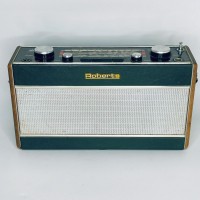 |
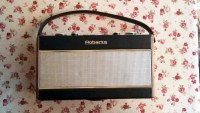 |
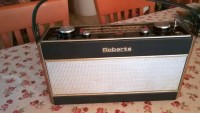 |
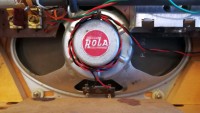 |
||
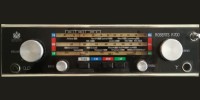 |
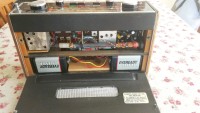 |
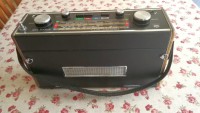 |
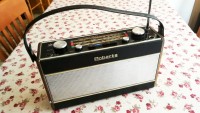 |
||
 |
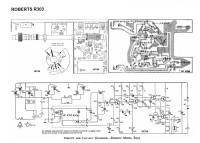 |
 |
|||
|
Return to top of page
|
|||||
|
|
Return to: IK3HIA home page |
|
Return to: Roberts Radio page |
|
Return to: Transistor Radio |